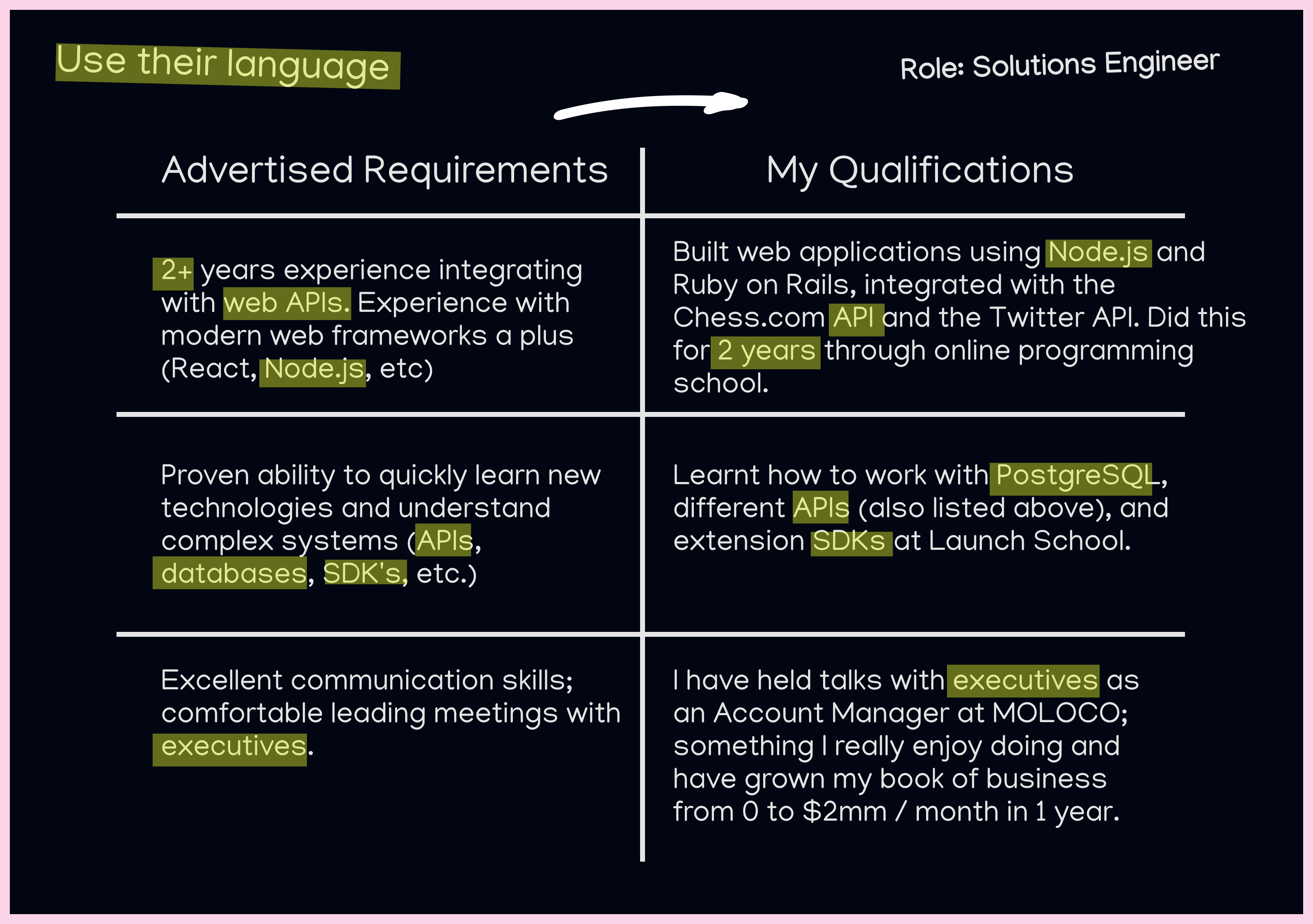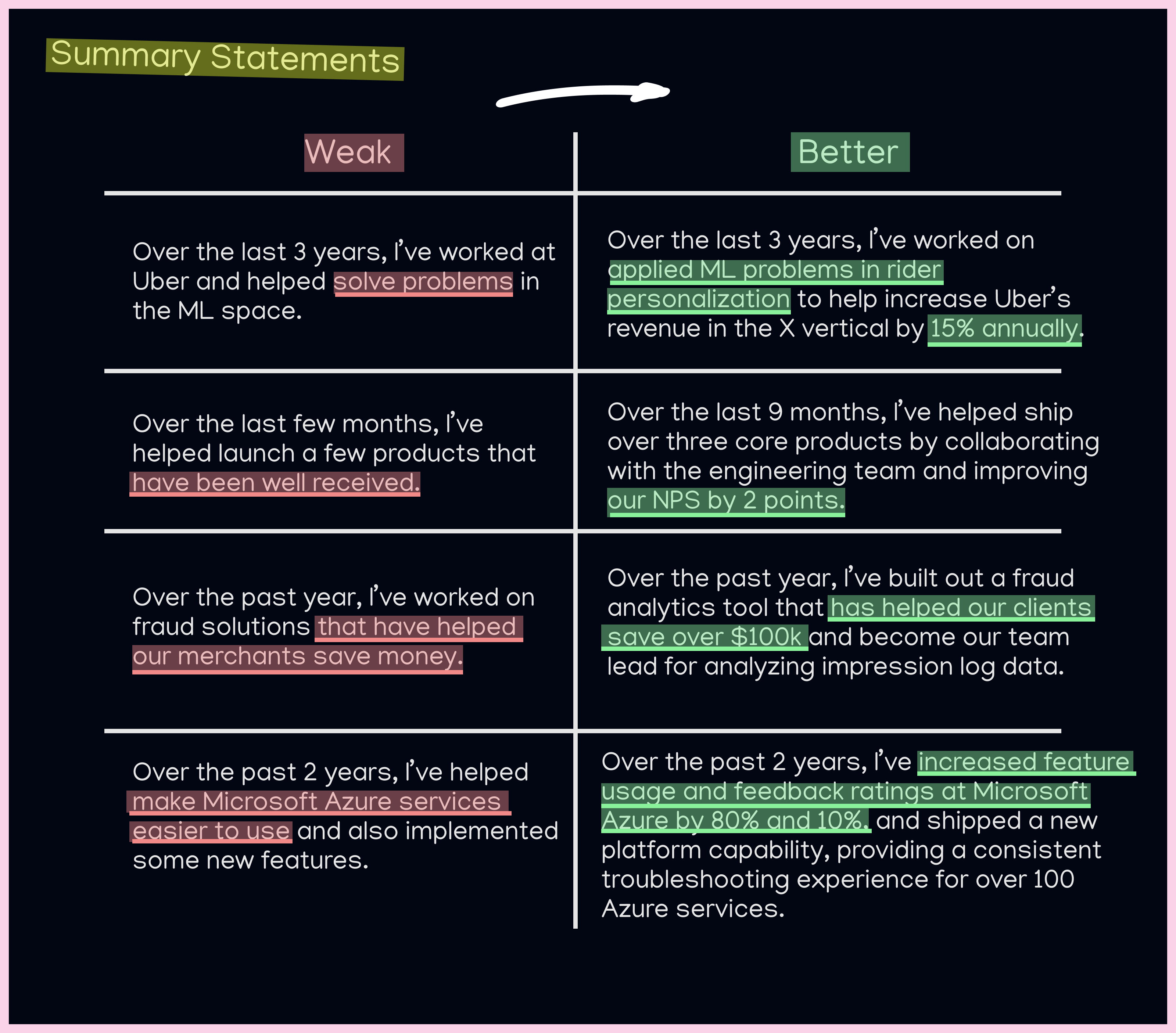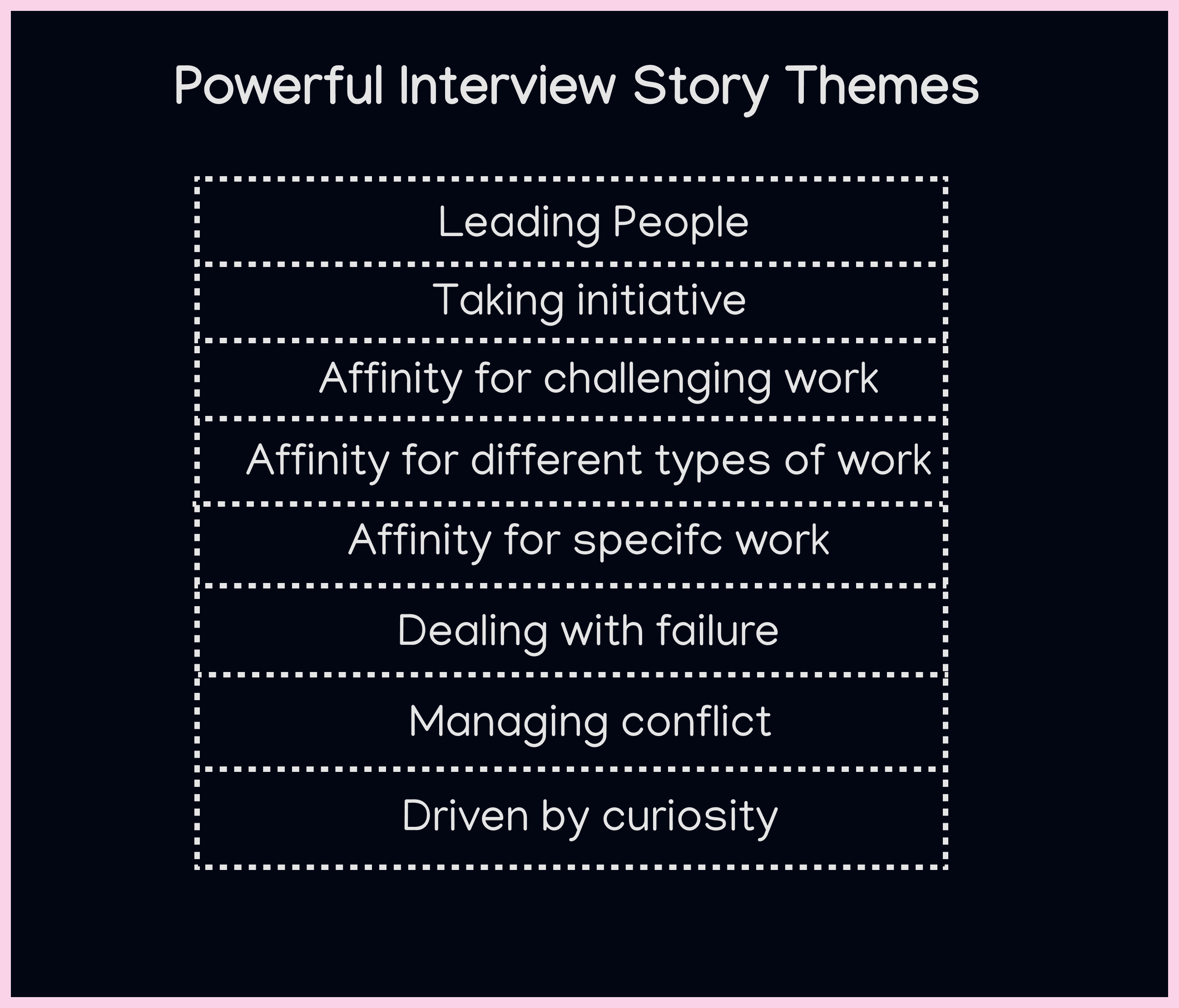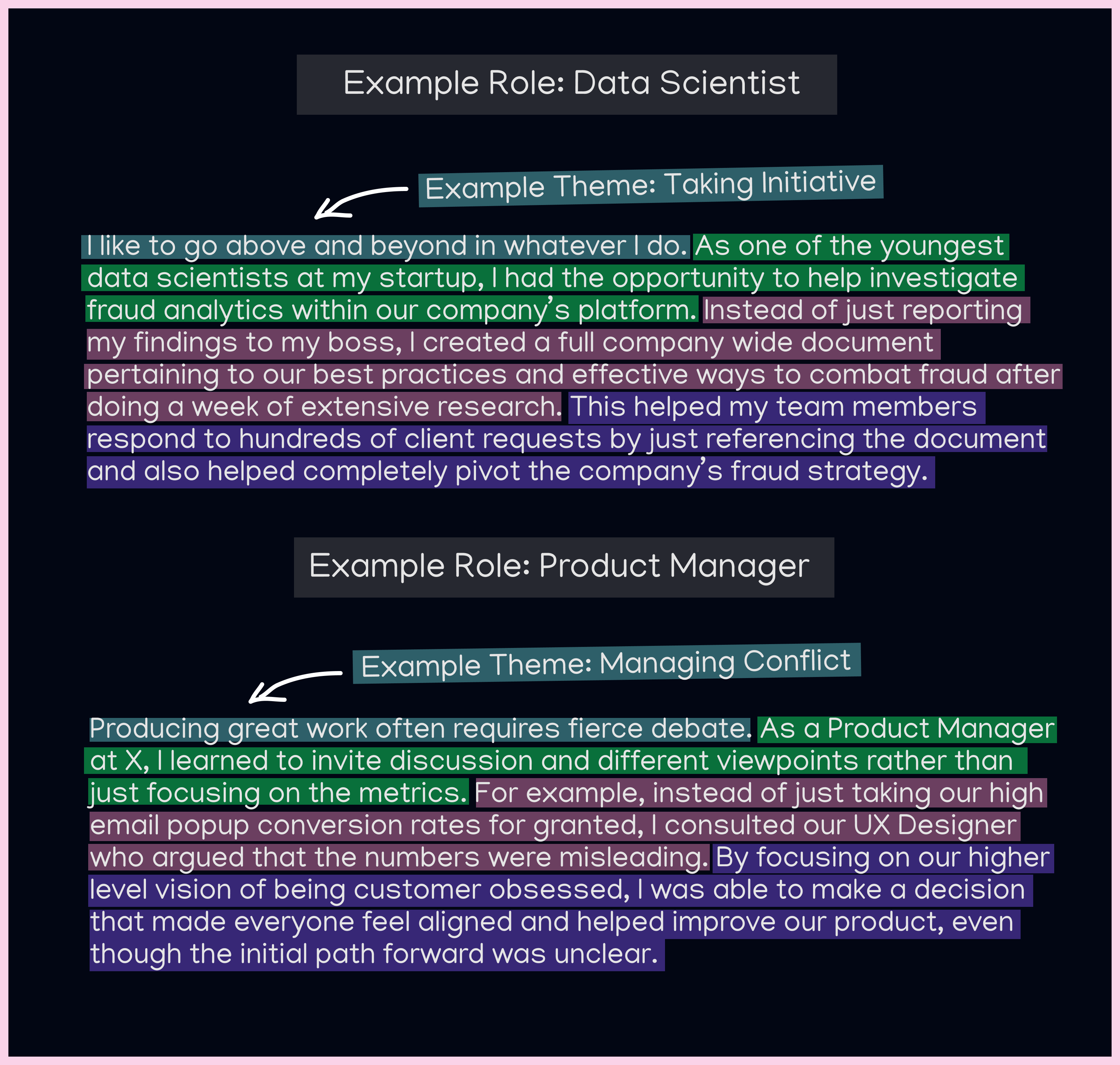Most people think a cover letter is about themselves. This isn’t true.
A cover letter is a marketing tool. Treat it like one and you’ll see it do wonders. Treat it like an autobiography and you’ll wonder why no one gets back to you.
Here’s the cover letter formula that got me my current job:
Always write a cover letter from scratch. It's better to apply for five relevant positions with a complementing cover letter than to apply for fifty positions without any background research.
The best way to do this is to start by analyzing the job description.
A job description is composed of two parts:
First, focus on the “what you’ll do” portion. The first few bullets are the most important. And we need to make sure that they’re addressed in our cover letter. Start highlighting the ones you have experience carrying out.

Next, take a look at the qualifications. Note down the ones you can comfortably meet and ignore any you don’t. We also want to highlight the ‘preferred’ or ‘nice-to-have’ items listed in the job posting if you satisfy those.
Quick note: Qualifications are always negotiable and should never deter you from applying if you think you’re almost there but missing a few requirements.

Make sure to note all these skills you’ve highlighted in the job description down. We’re now ready to move onto our next step.
Create a table with two columns. In the left column jot down the highlighted skills you identified in the above section. And now in the right column, start writing down how you can match up to the advertised qualifications.
Here’s an example for my latest role. Notice how I try to use as many of the same words as the job description:

For now, just put down the qualifications without any regard for style. Also, you don’t need qualifications for all the requirements. We’re only going to use the top two anyway.
Struggling to come up with qualifications? Try to ask your co-workers or peers about projects they’ve enjoyed working with you on. Keeping a brag document can also be really helpful.
And try to speak the employer’s language. So if a job description mentions “QuickBooks,” don’t just say you’ve used “accounting software”.
You’re a great fit for the role. Now you have to convince them that you want to work there.
It’s best to start brainstorming for this question before you start writing the cover letter.
Realize that this is just a research based question. If you do enough research, you will find information about the company that you can link back to your own interests and goals.
To help you do research, ask yourself the following questions:
A great place to find more info is to look at interviews that their founders or executives have done. Another is the company’s blog.
Once you’ve done your research, list out why you find each answer to the above questions appealing. What is it about rockets that appeals to you? Why is a video messaging platform one you can connect with?
And if you’ve been using their product, that enthusiasm will shine through. It’s not mandatory and it’s not even common, but when it does happen, you have a great reason for why you want to work at the company.
We’re going to use the following format for your cover letter:
1. Who you are, what you want, and what you believe in.
2. Transition
3. Skill & Qualification Match
4. Why do you want to work there?
5. Conclusion
Use the first one or two sentences to make some statements about who you are, what you want, and what you believe in. Here are some good examples:

Emphasize your strengths and also ideally mention something specific to the company.
I like to link the intro in my cover letter to the first skill-qualification match by having a summary statement and attaching it to a generic sentence:

The first sentence summarizes what you will bring to the company. The second helps flow into the experiences you’re about to write about.
Mine would be:
Over the last 12 months, I’ve helped my company generate over $X in revenue by leading meetings with executive leaders and also built a variety of web applications on the side.
And now I’m excited to continue my journey by contributing and growing at Adyen. There are three things that make me the perfect fit for this position:
Here are some examples that differentiate weak and better summary statements:

Avoid jargon and get specific. Half the words, twice the examples. Ideally with a few numbers sprinkled in.
Quick Note: The summary statement is also great to add to the top of your Linkedin bio.
Go back to your table matching your qualifications to the requirements. Pick the two most important ones.
We’re going to link your qualifications to a theme. And then use that to transform your boring bullet points into exciting sentences.
Here are eight common interview story themes:

Let's say we ended up with the below table when analyzing a specific job description.

And let’s take our first qualification:
Conducted Feature-Mapping and Requirements Gathering sessions with prospective and existing clients to formulate Scope and Backlog. Responsible for managing and creating backlog, writing stories and acceptance criteria for all managed projects.
Let’s figure out how we can link this to one of the interview story themes:

And here's another example:

So what we’ve done here is abstracted some themes from this person’s actual qualifications.
I know this isn't super scientific. More themes than just one work for most qualifications. But the goal is to help you solidify the type of story you want to tell.
And now that you have your theme, you can use it to guide your body paragraphs using this format:

Some more examples:

Pick your two most favorite aspects about the company that you already found when doing your research. I like to pick one value driven one and one industry or current topic related. If you use their product, though, that should be first on your list.
Here are some examples you could use for popular companies:
| Company |
|
|
|---|---|---|
| Nvidia | Value: “Innovation at Nvidia means a willingness to take risks”
Link: My most important learnings have come when I’ve stretched myself, whether that be raising my hand in a lecture with 500 people or reaching out to an industry expert about computer vision and its potential impact on X. |
Nvidia’s recent partnership with the train safety startup Rail Vision is an awesome example of the powers of computer vision in making the world safer.
Link: The power of innovation within the tech industry is what drew me to it and by working at Nvidia I will be at the forefront of that innovation. |
| Figma | Value: “Love your craft - We ask why until we get to the core and continually focus on solving the right problem, not just shipping work.”
Link: At my previous job, I found that my ability to figure out the why behind a feature I was implementing helped build a better product. I want to develop a better product sense and improve my communication skills, which is something I can do at Figma. |
The Figjam release emphasizes Figma’s commitment to helping teams build together.
Link: I’ve done my best work surrounded by a whiteboard and a passionate team. I want to work at a company whose core mission makes that possible for anyone in the world. |
| Value: “Uniting profit and purpose”
Link: It’s really important for me to know that my work is having a real impact on people’s lives and I especially like how Twitter is able to tie its philanthropy to its business objectives. |
Twitter has a very data-driven approach to its product decisions. They have infrastructure set up for running experiments, and it's easy for people from different parts of the company to test their ideas on 1% of users.
Link: I want to be able to work somewhere where experiments are encouraged and where data is leveraged to make product decisions. Source: Quora |
|
| Value: “Relationships matter”
Link: Whether it be my first internship or why I decided to pivot into this field, the one constant has always been the support provided by my peers. By constantly exploring new ideas and meeting people from different backgrounds, I believe I can do my best work. |
Linkedin’s latest “lend a hand“ feature enables anyone to immediately add value to a job seeker’s life.
Link: I want to continue developing features that help people get the help they need to progress in their career. |
|
| Coinbase | Value: “Act like an owner”
Link: The crypto community embraces innovation and strives for a better future. I want to do my part in helping build a more secure, distributed economic system. |
I read Brian Armstrong’s recent blog post on how Crypto enables economic freedom.
Link: Crypto networks are inherently open and unbiased which is what really appeals to me. |
| Loom | Value: “Embrace the weird”
Link: My path to engineering has revolved around following my own unique interests and being curious. I want to work at a company where I’m encouraged to go down rabbit holes and be original. |
Loom’s recent blog post on building a remote engineering team reshaped how I think about asynchronous communication.
Link: As the world embraces remote work, Loom offers both a high fidelity and asynchronous method of communication. I want to be at the forefront of this new wave and help build tools to redefine how work is done globally. |
| Airbnb | Value: “Be a cereal entrepreneur”
Link: Airbnb’s founding story involving selling cereal to stay afloat inspires me. I thrive on creativity and hustle, and want to join a company that embodies those traits in its DNA. |
The development of conversational AI on the Airbnb platform is super interesting to me.
Link: After taking multiple AI classes, I’m intrigued on how we can continue to use AI to help improve the customer experience and want to build on my strong foundations in this space. |
Now that you’ve got two reasons, it’s time to craft together a simple paragraph that weaves them together:
Third, I’ve been following [COMPANY] for a couple of months now and I resonate with both the company’s values and its general direction. The [Insert Value] really stands out to me because [Insert Reason]. I also recently read that [Insert topical reason] and this appeals to me because [Why it appeals to you].
Realize that this part is your chance to bring out what you like about the company. And if you can’t really think of anything, maybe you need to rethink why you’re actually applying.
Simply state what you want and why you want it:
I think you’ll find that my experience is a really good fit for [COMPANY] and specifically this position. I’m ready to take my skills to the next level with your team and look forward to hearing back.
Thanks,
Your name
Combing everything, here’s what my cover letter for my current job looked like:

And voila. You now have all the tools to write a killer cover letter.
The power of a good cold email is pretty crazy.
It'll get you interviews at places you’re probably not qualified for. And also introduce you to the most badass people in this industry.
Best of all: most applicants aren't doing this. So you'll stand out and increase your chances of getting hired.
In my next post, I'll teach you how to transform your cover letter into a cold email that recruiters respond to (about 25-30% of the time).
Enter your email below if you want it delivered straight to your inbox when I release it.
I'll show you how to transform your cover letter into a great cold email. Enter your email below to get it when the article is released.
***
I hope that was useful. Took about 5 weeks to write. If you did get something out of it, it’d mean a lot if you could share it with 1 person who’s currently job hunting.
If you liked this post, you’ll like my newsletter. It's my best content delivered to your inbox once every two weeks. You can subscribe here.
Until next time,
Shikhar
Some people call it a newsletter - I call it a good time. I write about tech careers and how you can get ahead in yours. It’s my best content (like this case study) delivered to you once a week.